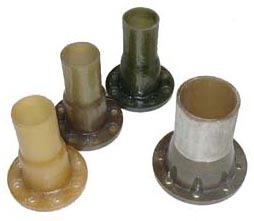| Pipe Flanges are widely used as a popular category of pipe fittings. A flange is used to mechanically connect two pipes together. It can also be used to mechanically connect a pipe to a tee, valve, choke or any other piece of equipment. Flanges are available in round, square, and rectangular shapes. In some cases, flanges are usually in the shape of a ring or a plate to form a rim at the end of a pipe when fastened to the pipe. This is an example of closet flange. A flange can also be a plate for covering or closing the end of a pipe. This is a blind flange. Thus, flanges are considered to be projecting or internal components which are used to support mechanical parts. They are like rims which are used to strengthen the mechanical part or they are a means of attaching that part to another part or surface. | ||
|
Materials used: Various materials used in the making of flanges are as follows:
|
||
|
Pipe flange measurements:
|
||
|
Buying Tips To buy pipe flanges, the buyers should keep in mind certain factors like:
|
||
|
Designs of flanges: A wide variety of flange designs are available. They are available in various shapes and sizes. Some of the popular designs are as follows:
|
||
| Custom shapes and sizes are also manufactured by numerous manufacturers. Various pipe flanges include machining details such as gasket surfaces, facing details, non-standard drilling, bevel and radius edges, o-ring grooves and raised or recessed faces. Some typical designs on flanges faces are shown below. | ||

Raised Face 
Counter Bore 
Radius |
||

Chamfer 
O-Ring Groove 
Gasket Surface |
||
Pipe Flanges | Pipe Flanges Manufactures | Pipe Flanges Exporters | Pipe Flanges SuppliersPipe Flange | Pipe Flange Manufacturers | Pipe Flange Exporters | Pipe Flange SuppliersPipe Flanges Manufacturers India | Pipe Flanges Exporters India | Pipe Flanges Suppliers India |
||

|
||
|
How is a flange attached to a pipe? The flange is attached to the pipe by:
|
|
Uses of pipe flanges: Flanges are used for variety of purposes. The main purpose is to connect pipes but they are also used for connecting other equipments. Flanges are fit to a variety of other components besides pipes. They are fitted to bellows, ducts, wheels, and cameras. We give below the various uses of pipe flanges:
|
|
Applications of pipe flanges: Pipe flanges are widely used in pipe fittings of various industrial, commercial and residential applications. Pipe flanges can be customized to suit your application with various machining details. These pipe flanges have been used extensively in:
|

